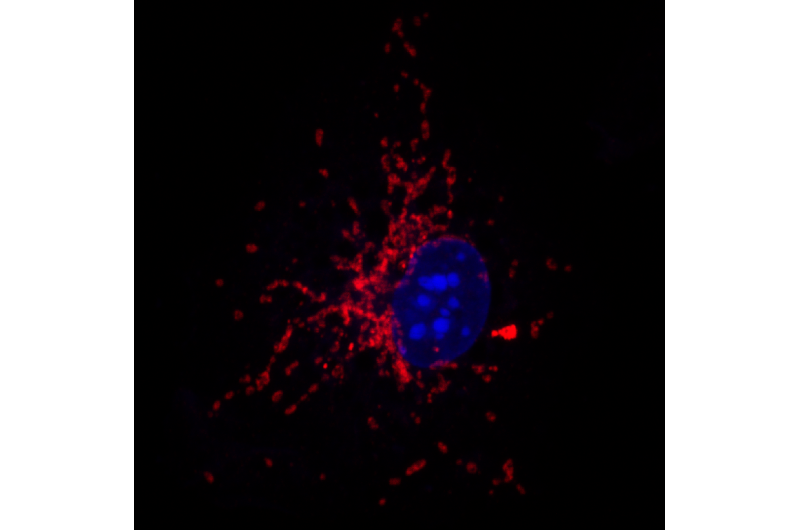Changes to mitochondrial metabolism allow the immune system to adapt to infection

The immune system is equipped with the mechanisms to adapt to bacterial infection, and one of the keys to this efficient reaction is rooted in changes that take place in the metabolism of mitochondria. These changes are important for adaptation of the response of immune cells to live or dead bacteria. The discovery was made by scientists at the Centro Nacional de Investigaciones Cardiovasculares Carlos III (CNIC), led by Johan Garaude, Rebeca Acín-Pérez, José A. Enríquez and David Sancho, and is published in Nature Immunology. The study findings could help in the design of vaccines and provide new pharmacological targets for the treatment of infections and inflammatory metabolic disorders.
Microorganisms contain specific molecules that are detected as danger signals by the cells of the immune system. Evidence acquired in recent years shows that these molecules are the trigger allowing immune cells to undergo metabolic changes needed for an efficient response to pathogens. For example, explains David Sancho, "Detection of the lipopolysaccharides produced by certain types of bacteria promotes an increase in glycolysis, the metabolic pathway that degrades glucose to obtain energy for the cell. This permits the rapid generation of energy and metabolites for the synthesis of new molecules required for the elimination of the pathogens."
The Nature Immunology study, led by scientists at the CNIC, was conducted in partnership with the colleagues at the French INSERM; the Charité Hospital in Berlin; the Centro de Investigación Médica Aplicada (CIMA), Instituto de Investigación Sanitaria de Navarra (IdiSNA) and hospital network in Navarra; and the Instituto Murciano de Investigación Biosanitaria (IMIB-Arrixaca). The study shows how the detection of live bacteria by immune cells called macrophages induces profound structural changes in the organization of the mitochondrial electron transport chain (respiratory chain) in these cells. These changes, explains Rebeca Acín-Pérez, "enable the macrophage to redirect metabolic routes to achieve a more efficient metabolism".
Energy producers
The electron transport chain produces energy from ingested nutrients. The electrons are derived from molecules, mostly sugars and fats, that are oxidized during cell metabolism. The chain is composed of multiprotein complexes (I to IV) that organize into supercomplexes of complex I with complexes III and IV to increase the efficiency of the system, explains José A. Enríquez. The team found that the detection of live bacteria produces a "transitory reduction in complex I and associated supercomplexes in the mitochondria of macrophages." Despite this decrease, the team also found that respiratory activity increases in the first hours following infection due to the action of accessory pathways.
The research has also made it possible to decipher how this change in the use of mitochondrial complexes after exposure to live bacteria, but not dead ones, depends on signaling pathways related to innate receptors and the inflamasome . And the CNIC team found that activation of these signaling pathways requires the generation of oxidative molecules that modulate the activity of mitochondrial complex II. In turn, complex II activity leads to the generation of signaling molecules, cytokines and metabolites, that favor the anti-bacterial immune response.
The study identifies bacterial RNA as one of the factors associated with live bacteria that triggers changes in the organization of the mitochondrial respiratory chain in macrophages. Many current vaccines are synthetic or use inactivated (dead) microorganisms. Therefore, according to Johan Garoude, "The identification of functional changes in immune cells associated with microbial viability is of great interest for the generation of more effective vaccines."
More information: Nature Immunology, DOI: 10.1038/ni.3509


















